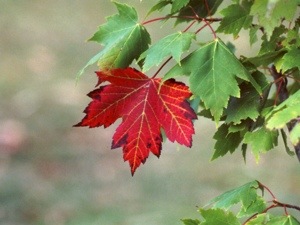Red Maple leaf toxicosis occurs when horses ingest the wilted or dried leaves and is most commonly seen in the fall months. It causes oxidative damage to the body which leads to hemolysis (or lysis of red blood cells).
Red maple trees are found throughout the eastern part of North America. It’s leaves are 2 to 4 inches long and have 3 to 5 lobes with serrated edges. Leaves from other maple trees may result in similar signs, but the exact toxin responsible for disease has not been identified.
Horses with early toxicity are most commonly depressed first. Other signs to follow can include yellowing of skin, dehydration, increased respiratory rate, and increased heart rate. Bloodwork will show a decreased packed cell volume (PCV).
There is no antidote for red maple toxicosis, so treatment is supportive. IV fluids are usually warranted to maintain perfusion, prevent shock, and correct electrolyte abnormalities. A blood transfusion may be needed if the PCV is too low.
Prevention is the key! Even if there are not any red maple trees in your pasture, be sure to check them after storms as leaves and branches could be blown in.
